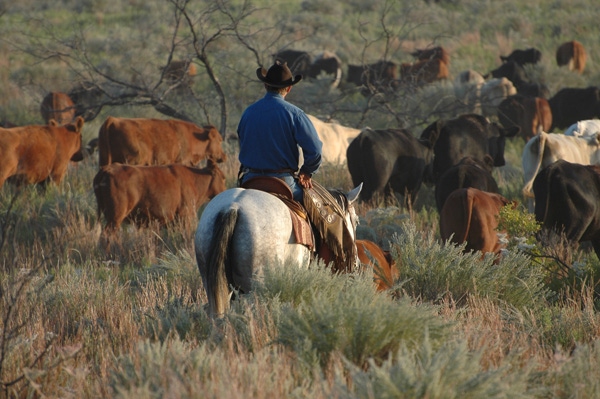July 30, 2014

Disposition is highly heritable and the industry has put tremendous selection pressure upon this important trait. If you couple that progress with improved cattle handling practices and facilities, the days of stampedes and wild cows seem to be essentially over.
Taking disposition scores every time we worked cattle the in the last decade or so has proven to me that selection for improved disposition not only works, but is relatively simple to do. However, I think part of the improvement in disposition has occurred for other reasons as well.
First, is the cost of labor – cattlemen are running more cows with less help, and simply can’t afford to get hurt. Plus, while it’s well documented that cattle with better dispositions feed better and are more efficient, the greatest benefit is simply the improvement in working around the cattle on a day-by-day basis.
But the rise in use of all-terrain vehicles (ATV) and side-by-sides – and less reliance on horses – to work cattle, I think has also forced producers to focus on improving cattle disposition. My experience this week validates this hypothesis.
We had six pairs and a couple of bred heifers go through a water gap and into a neighbor’s pasture where they commingled with about 150 of our neighbor’s cows. The pasture was big, and with my teenage cowboys away showing horses, I thought I might have to ride all over the pasture to find the cows.
So I opted for jumping on the ATV. I took a few panels with me, and the plan was to sort my cows off the neighbor’s herd, push them to the makeshift corral, and then haul them back to where they belonged.
Four-wheelers have their place, and I use them all the time, but moving cows on one is like digging a ditch with a spoon. It can be done, but it isn’t a good use of one’s time. We’ve built lots of facilities and selected hard for good disposition in our cows, in large part to accommodate our desire to use these blasted contraptions.
The bred heifers were easy to pen, and the first four pairs were penned without a lot of heartburn, too. The last two, however, were a different story, as a calf kept wanting to go back to the herd, and then so did her momma.
Eventually, I made the decision to head back and saddle up to get the job done. I have to admit, a cowboy feels a lot better with spurs on his heels rather than a pair of pliers in his back pocket.
Machines make our life so much easier, but I couldn’t help but think that my 4-wheeler was like an axe, and the horse was more of a scalpel. They both have their place, but there is nothing like having the right tool for the job. That cow that was wild when worked with a 4-wheeler turned out to be just fine when I was on horseback.
The opinions of Troy Marshall are not necessarily those of beefmagazine.com or the Penton Farm Progress Group.
Other trending stories at BEEF:
Take A Virtual Tour: World's Largest Vertically Integrated Cattle Operation
9 Tips For Preventing Pasture Bloat In Cattle
Cows Out On Pasture | 80+ Grazing Photos From Readers
5 Trending Headlines: Mobile Shade For Cattle & Animal Ag Wins An Antibiotic Lawsuit
Parasite & Pest Management Products To Consider
New Stocker Index Prices Stocker Calves More Precisely
7 U.S. Ranching Operations Are "Best of the Best" In Stewardship
About the Author(s)
You May Also Like



